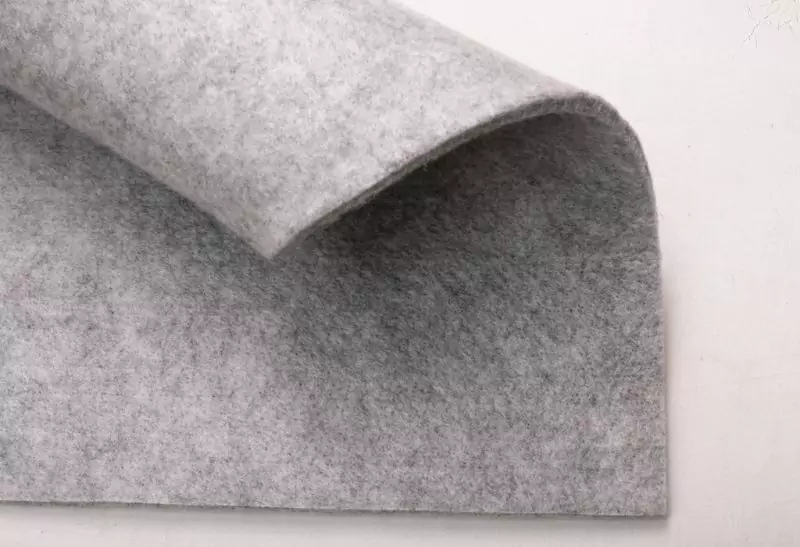Fabrics called geotextiles are utilized in several sectors and purposes. They are employed in clothing, engineering, building, drainage, and soil stabilization as well as erosion prevention.
Geotextiles are often comprised of synthetic fabrics like polyester or polypropylene, which makes them quite durable. They are used to fortify roadways and prevent erosion when submerged underneath during geotextile constructions because of their resilience to decay and corrosion.
There are numerous distinct types of geotextile fabrics, each with a specific function; nevertheless, the two most often used fundamental types are woven and non-woven geotextiles. We shall highlight their differences in this blog.
Woven Geotextiles
Slit tapes were used to create the first woven geotextiles. To create slit tapes, flat extruded threads are weaved at 90-degree angles. The result is a strong textile. They have very low water permittivity and minimal soil interaction qualities because of their large, flat surface.
They are not a good option for civil applications because to these limitations, particularly in damp environments. A highly efficient material has evolved through time as a result of the advancement of high-performance woven geotextiles.
By offering separation, confinement, and reinforcement, these advancements’ enhanced flow rates and greater interaction coefficients make them significantly more suited for civil applications. They also make it possible for better drainage and filtration.
Non-Woven Geotextiles
Nonwoven geotextiles are produced using a synthetic textile, just as woven textiles. Nevertheless, the interconnecting of the threads gives them a more haphazard structure. Confusion occurs from the comparable uses of woven and nonwovens.
The physical characteristics of a geotextile may be used to distinguish it from a nonwoven geotextile the simplest manner possible. Nonwoven geotextiles have the familiar “fuzzy” appearance of felt and have a similar look and feel.
Presently, a wide variety of techniques are employed while producing nonwoven geotextiles. Needle punching is the most typical production process. A vast quantity of tiny fibers is taken and interlocked together using a barbed needle to create needle punched nonwoven geotextiles.
When utilized in a civil application, nonwoven geotextiles typically provide the tasks of separation, filtration, and drainage. When examining material parameters, it might be difficult to distinguish between woven and nonwoven geotextiles.
In general, nonwovens have greater flowing rates and permittivity whereas woven often have higher strength values. Starting with elongation is the simplest approach to tell the difference between the two materials. Nonwovens will elongate significantly more than a woven.
If the elongation is specified at all, it will be indicated as higher than 50% for a nonwoven and between 5% and 25% for a woven. They differ significantly in terms of elongation and permittivity.
Benefits of Woven Geotextile
The process of making woven geotextile textiles involves the conventional weaving of individual threads into sizable sheets. Fibrillated yarns, monofilaments, slit films, and other materials are used to make individual threads.
On a specialized loom, they are woven collectively to produce a broad, flat sheet of geotextile fabric. Woven geotextiles have substantially greater load capabilities as a result of this procedure, which makes them perfect for demanding uses like road building.
However, because of their nonporous nature, they are perfect for some erosion control projects where water has to be guided or transferred over the top while being kept from penetrating the soil underneath. The resilience to corrosion and long-term durability of woven geotextiles are additional outstanding qualities.
Benefits of Non-Woven Geotextile
On the reverse side, nonwoven geotextiles are made by gluing materials together rather than weaving them. Chemicals, heat, or other means, such as needle punching, are used to accomplish this. These nonwoven textiles are frequently utilized in separation and filtration applications and are primarily constructed of synthetic materials.
However, they are a preferable option for certain applications like shielding geomembrane lining systems against intrusions from the outside or the inside. Nonwoven geotextiles, on the other hand, provide a superior option for the treatment of such problems when pooling or standing water is a problem.
Nonwoven textiles are still appropriate for a variety of applications because they have excellent drainage qualities in addition to strong toughness and durability.
Uses of Woven Geotextile
These geotextiles are not highly porous since they are made by weaving films or threads together. They are thus not the best choice for drainage projects.
Nevertheless, tensile stress makes woven geotextile the best choice for corrosion-resistant projects and erosion management that does not entail draining, and their extremely high load capacity makes them great for building highways, airport runways, and parking lots.
They are appropriate for long-term applications since they will also withstand UV damage.
Uses of Non-Woven Geotextile
Non-woven geotextiles aren’t as good for stabilization or reinforcing projects since they can let moisture escape. Rather, applications involving protection, drainage, separation, and filtration are where they work best.
When utilized below ground, specifically, they do not deteriorate over time because to their high-water permeability rate. Non-woven geotextiles may also be cut more easily, which makes them beneficial in some industrial purposes.
Differences Between Woven and Non-woven Geotextiles

Recognizing the distinctions between them can help you select the ideal geotextile material for your project. In average, non-woven geotextiles have superior flow rates and permeability whereas woven geotextiles have higher durability values. Here is a list of the variations.
1. Physical characteristics
Woven materials feel and seem plastic-like, but non-woven fabrics feel and look fuzzy.
2. Production Method
Non-woven geotextiles are created by gluing fibers together, whilst woven geotextiles are constructed in Malaysia using a film or loom.
3. Refer
Woven materials are classified by tensile stress, whereas non-woven materials are classified by weight, often in grammes per square meter.
4. Elongation
Non-woven geotextiles elongate far more than woven geotextiles, which only elongate between 5% and 25%.
5. Weight
Woven materials are rarely given a weight since, regardless of weight, they are normally employed to create separation and reinforcement. On the other hand, non-woven frequently have their weight indicated.
6. Expense
Non-woven textiles are often more economical since they can be produced more quickly, whereas woven fabrics are more costly to produce and need longer manufacturing processes.
7. Strength
Woven textiles are intertwined by thread crossing, which results in a strong reinforcement. As a result, they are tougher and more resilient than non-woven fabrics.
Conclusion
Over the last few centuries, geotextile usage has increased consistently. The first geotextiles were made from widely accessible fabrics that were already on the market, such carpet backing and upholstery fabric.
When choose the appropriate fabric for your geotextile setup, all of these factors must be taken into account.
Make sure you are utilizing the appropriate type of geotextile based on your project. Utilizing the appropriate product for your project helps increase durability and general aesthetic.

